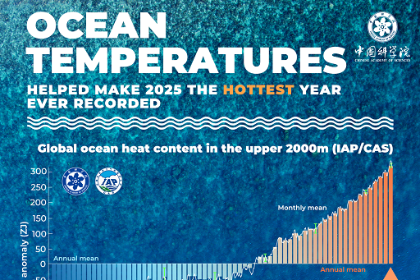Threat of virulent COVID-19 second waves in G20 economies

Since secondary waves of the virus started far earlier than expected and could be compounded by an adverse mutation, a new threat looms over the world’s largest G20 economies – policy mistakes and a more virulent COVID-19 strain.
In the absence of deceleration, the accumulated confirmed cases worldwide could soar to 50-60 million and deaths to 1.5 to 1.7 million by year-end. If Asian countries fail to “bend the curve” – that is, slow down the rapid acceleration of new COVID-19 cases - what we have seen in the past half-year could be a prelude to something worse across the region.
Policy mistakes in G20 compound global pandemic
Some countries will face the secondary waves from a position of strength. They are countries that have managed to bend the curve, with decelerating cumulative cases and lower positivity rates (the percentage of people who test positive for the virus of those overall who have been tested).
Other countries must struggle with the new waves from a position of weakness. They are countries that have failed to bend the curve, with accelerating cumulative cases and higher positivity rates.
Collectively, the G20 economies account for 90 percent of the gross world product, 80 percent of world trade, two-thirds of the world's population, and half of the world's land area. So, what happens to G20 countries will affect the entire world. The distressing corollary is that when these economies fail to contain an outbreak, the resulting pandemic will also impact the world.
In the postwar era, severe outbreaks were typically confined into poorer economies because more prosperous countries relied on science-based public-health policies. The COVID-19 case has been very different.
As some of the leading G20 countries mobilized against the outbreak belatedly and ineffectively, these policy mistakes account for massive human costs and economic damage. Consequently, some of the world’s largest economies are now at risk.
To gain a more realistic picture of the associated threats, let’s use population-adjusted data and linear scale to focus on those economies where cases are still accelerating and the positivity rate remains high (Figure 1).
Figure 1 Cumulative Confirmed COVID-19 Cases (Per 1 Million)

World’s largest COVID-19 sources – primary risk groups
In this view, the primary risk group currently involves the United States and the Americas, including Brazil, Argentina and, to a degree, Mexico and Canada.
While the positivity rates have decreased from peak levels in the US, total cases are approaching 6 million and deaths 200,000 in the US, where testing capacity remains behind that of Russia. In Brazil, testing is at the level of Djibouti. In brief, the real number of cases and deaths are likely significantly higher in both nations.
Regionally, the Americas are followed by South Africa, the Middle East including Saudi Arabia, Russia, Canada, and Western Europe including the UK, Italy, France and Germany. In these countries, the numbers and the positivity rates, respectively, are significantly lower than in the US and Brazil, but they have not been able to avoid earlier-than-anticipated secondary waves.
In India and certain countries in Southeast Asia – the Philippines and Indonesia – where the outbreak arrived somewhat later, positivity rates remain alarmingly high, but numbers remain significantly lower than in most advanced economies.
In Japan, the true spread of the virus is underreported because testing capacity remains the same as in Zimbabwe. Japan’s testing is less than 5 percent of that in the US and the UK.
In contrast, China managed to contain the pandemic within a month or two, which has minimized human costs and economic damage in the mainland. South Korea’s early performance was successful but more recently it has been hit by several secondary waves.
A new mutation, severe regional consequences
Recently, a “more infectious” COVID-19 strain was found in tested samples in Quezon City and in Malaysia, which has attributed its cases to clusters linked to cases imported from India and the Philippines.
This is a development that was projected in my new report, and which requires urgent research and aggressive vigilance. Here’s why: Not so long ago, a mutation was discovered in the protein that permits SARS-CoV-2 to enter cells, possibly making it easier for the virus to spread. The implications are unsettling.
The original samples of the novel coronavirus out of Wuhan, China, were a variation that scientists call the "D" clade. Before March 1, over 90 percent of viral samples taken from patients were from D variation. Since March, however, a new "G" variation has been dominant (Figure 2).
Figure 2 Potential Transition of the Dominant Pandemic Form

Though not conclusive yet, current evidence suggests there has been a global transition from the D to the G variation. Worse, the latter appears to increase COVID-19 infectivity.
Virulent implications
If, as the researchers hypothesize, the G variation accelerated in Europe, it benefited from the global transportation hubs migrating across the Atlantic to New York City, which then seeded many of the outbreaks in the rest of the US, including locations where it is now running unchecked – as some investigative journalists also discovered by April.
There is a distressing implication associated with the presumed global transition from D to G variation. It could make the pandemic burden of emerging and developing economies more challenging than currently anticipated, particularly after normalization in the US and Europe, when quarantines, lockdowns and travel restrictions are phased out in the West.
Due to proximity and regional spillovers from the US, the G variation has been dominant in South America since March-April. Perhaps for similar reasons – proximity with Europe - it has also dominated infectivity in Africa.
In Asia and Oceania, the less-infective D was more dominant until recently. However, continued case acceleration and G variation dominance in several countries, coupled with the proliferation of secondary waves could change the status quo – for the worse.
Predecents matter
Historical precedents are instructive. Between 1918 and 1920, the Spanish flu is estimated to have infected 500 million people; every third person in the world at the time, while the death toll has been estimated at 17 to 50 million.
Yet, it was the second wave that proved far more deadly than the first. Facilitated by troop movements and logistical hubs during World War I, it spread over to North America, then Central and South America, and eventually to Africa, Russia and Asia.
Today, the precedent of the Spanish flu should underscore the importance of proactive vigilance until effective vaccines, therapies or both are widely available.
If we still haven't learned the “lesson of the second wave", we will be forced to learn it over a major crisis - a more protracted pandemic and a multiyear global depression.
Dr. Dan Steinbock is an internationally recognized strategist of the multipolar world and the founder of Difference Group. He has served at the India, China and America Institute (USA), Shanghai Institutes for International Studies (China) and the EU Center (Singapore).
The opinions expressed here are those of the writer and do not necessarily represent the views of China Daily and China Daily website.

































